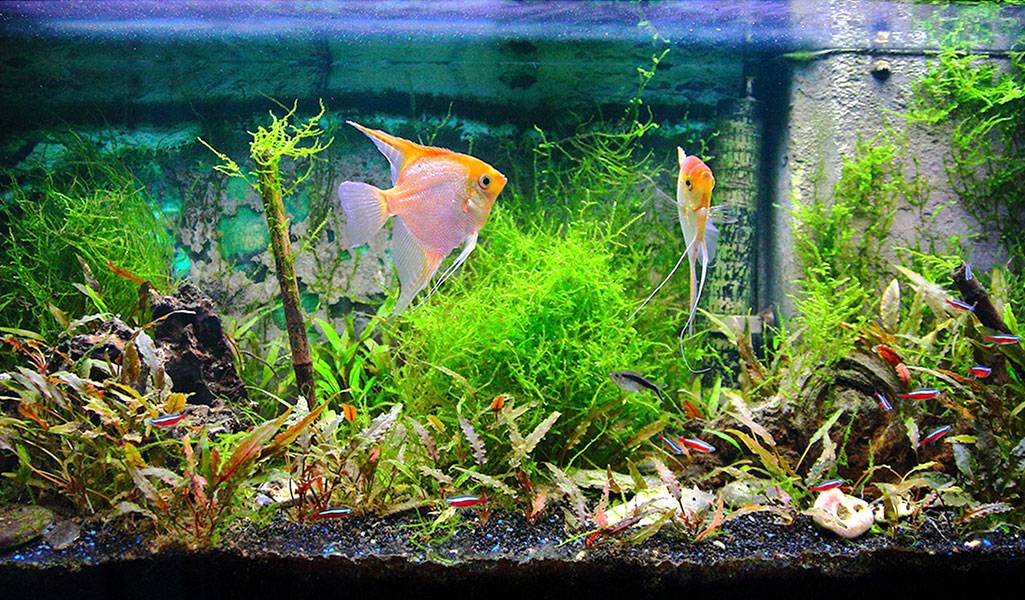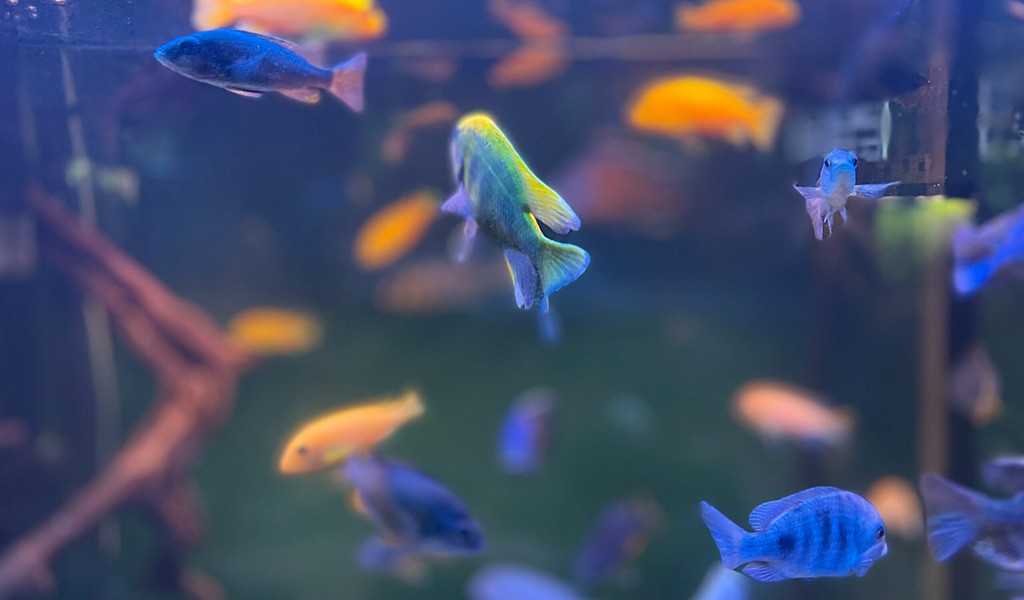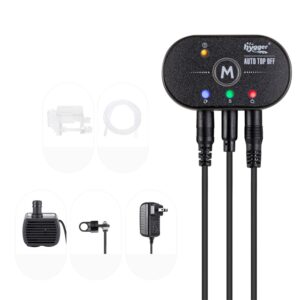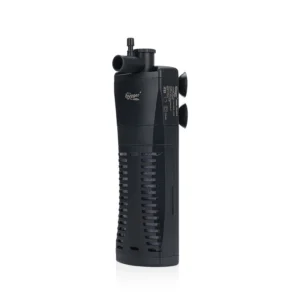By Gilad Susel from petfishonline.com
Cycling a fish tank is an essential process to ensure a healthy and thriving aquatic environment for your fish and other invertebrates.
The process involves the development of beneficial bacteria that convert harmful toxins like ammonia into nitrite and then into nitrate. It is necessary to eliminate toxic chemicals from the water and maintain good living conditions for aquatic pets.
This article will provide a detailed step-by-step guide on how to cycle a fish tank, including cycling a tank with and without fish and how to take care of a tank once it is cycled.
Content Table
Step-by-Step Guide for Cycling a Fish Tank
Cycling a fish tank is a time-consuming process, but it is crucial for the well-being of your aquatic pets. There are two methods to cycle a fish tank: with fish and without fish.
However, the best option is to cycle your fish tank without adding fish, as it is less stressful and does not harm any living creatures.
Here is a step-by-step guide on how to cycle a fish tank using both methods:
Step 1: Set Up Your Fish Tank
Before starting the cycling process, you need to set up your fish tank with the necessary equipment. You will need a heater, a filter, and an air pump.
A heater is required to maintain the water temperature between 75-85 °F, which is ideal for the beneficial bacteria to grow.
A filter is necessary as the beneficial bacteria colonize in the filter. An air pump will keep the tank well-oxygenated, which is essential for the beneficial bacteria to thrive.
Step 2: Add An Ammonia Source To Your Fish Tank
To start the cycling process, you will need to introduce ammonia into your tank.
Firstly, treat the water with a water conditioner to eliminate chlorine and chloramine from the tap water.
Now, you can introduce ammonia in your fish tank by adding food or directly adding ammonia. Directly adding an ammonia liquid is the faster way to cycle the fish tank.
Step 3: Wait For Ammonia To Spike
Now, all you have to do is wait for ammonia to occur in your tank. It will take 2–3 weeks for ammonia to convert into nitrite.
During this period, use an aquarium test kit to test for ammonia, nitrite, and nitrate levels in the water. Keep adding ammonia to maintain the level between 3-5 ppm.
Step 4: Watch For Nitrite To Occur
After 2–3 weeks, nitrite will occur in the water. It is toxic to fish and can cause severe harm to them.
Continue adding ammonia to maintain the level between 3-5 ppm and wait for the nitrite to convert into nitrate. This process will take another 2–3 weeks.
Step 5: Look For Nitrate To Occur
After 2–3 weeks, nitrate will occur in the water. It is the final stage of the cycling process, indicating that the beneficial bacteria are established in the tank.
At this stage, stop adding ammonia to the tank and wait for the nitrate level to rise to around 20 ppm.
Step 6: Check For 0 ppm Ammonia, 0 ppm Nitrite, And Some Nitrate
Once the nitrate level reaches 20 ppm, use an aquarium test kit to check for ammonia, nitrite, and nitrate levels in the water.
If you find 0 ppm ammonia, 0 ppm nitrite, and some nitrate, it indicates that your tank has cycled successfully.

Can I Cycle the Tank With Fish Inside?
Cycling a fish tank with fish is not recommended as it can be stressful for the fish.
However, if you still want to cycle your fish tank with fish, follow these steps:
Step 1. Get Your Fish Tank Ready By Setting It Up.
Set up your fish tank with all the necessary equipment like a filter, heaters, and air pumps.
Step 2. Add Fish To Your Tank.
Add a few hardy fish to your tank to start the cycling process.
Hardy fish like zebra danios or plates are recommended for cycling tank fish.
Step 3. Wait For Ammonia To Spike.
The fish you have added will produce waste that will convert into ammonia.
Test the water regularly for ammonia and nitrite levels and make sure to keep the levels under control.
Step 4. Keep Maintaining The Ammonia Level And Watch For Nitrite To Occur.
Maintain the ammonia level in your tank and wait for nitrite to occur.
Keep testing the water regularly and keep the ammonia and nitrite levels in check.
Step 5. Keep Maintaining The Ammonia And Nitrite Levels And Look For Nitrate To Occur.
Keep maintaining the ammonia and nitrite levels and wait for nitrate to occur.
Nitrate is not harmful to fish at low levels and will indicate that the tank has completed the cycling process.
Step 6. Look For 0ppm Ammonia, 0ppm Nitrite, And Some Nitrate.
Test the water regularly and wait until you see 0ppm ammonia 0ppm nitrite and some nitrate in your tank.
Once you have reached this stage, your fish tank has completed the cycling process, and you can add more fish to your tank.
How Can We Speed Up The Cycling Process?
The cycling process usually takes 4–6 weeks to complete, but there are some ways to speed up the process.
One way to speed up the process is to use beneficial bacteria supplements. Beneficial bacteria supplements like Seachem Stability or Tetra SafeStart can introduce beneficial bacteria to your tank and speed up the cycling process.
Another way to speed up the cycling process is to use live plants in your tank. Live plants can provide a surface for beneficial bacteria to grow and can speed up the cycling process.

What Should We Look For Before Adding Fish To Our Tank?
Before adding fish to your tank, make sure the cycling process is complete, and the water parameters are stable.
Before cycle the water in the fish tank, you should test the water for ammonia, nitrite, and nitrate levels and make sure they are within the acceptable range.
The acceptable range for ammonia is 0ppm, nitrite is 0ppm, and nitrate should be less than 40ppm.
Also, make sure the water temperature and pH are within the acceptable range for the fish you plan to add to your tank.
How To Take Care Of A Tank Once It Is Cycled?
Once your fish tank has completed the cycling process, you need to take care of it to ensure the well-being of your fish and other invertebrates.
Here are some tips to take care of your tank:
1. Perform Regular Water Changes.
- Perform regular water changes to keep the nitrate level in your tank low.
- Regular water changes will also remove any harmful substances from the water and keep the water parameters stable.
2. Feed Your Fish In Moderation.
- Overfeeding your fish can result in excess waste in the tank, leading to high ammonia and nitrite levels.
- Feed your fish in moderation and remove any uneaten food from the tank.
3. Maintain The Filter.
- The beneficial bacteria colonize the filter, so it is essential to maintain the filter properly.
- Clean the filter regularly to remove any debris or waste that can clog the filter.
Conclusions
In conclusion, cycling a fish tank is an essential process to maintain a healthy and thriving aquatic environment for your fish and other invertebrates.
The process involves the development of beneficial bacteria that convert harmful toxins like ammonia into nitrite and then into nitrate.
There are some ways to speed up the cycling process of your fish tank, such as using established filter media, adding bacteria supplements, increasing the water temperature, and increasing aquarium aeration.
Regardless of the method you choose, it is important to cycle your fish tank before adding any fish to maintain a healthy and thriving aquatic environment.


Great weblog here! Also your web site loads up very fast! What host
are you the usage of? Can I get your associate link for
your host? I desire my site loaded up as quickly as yours lol